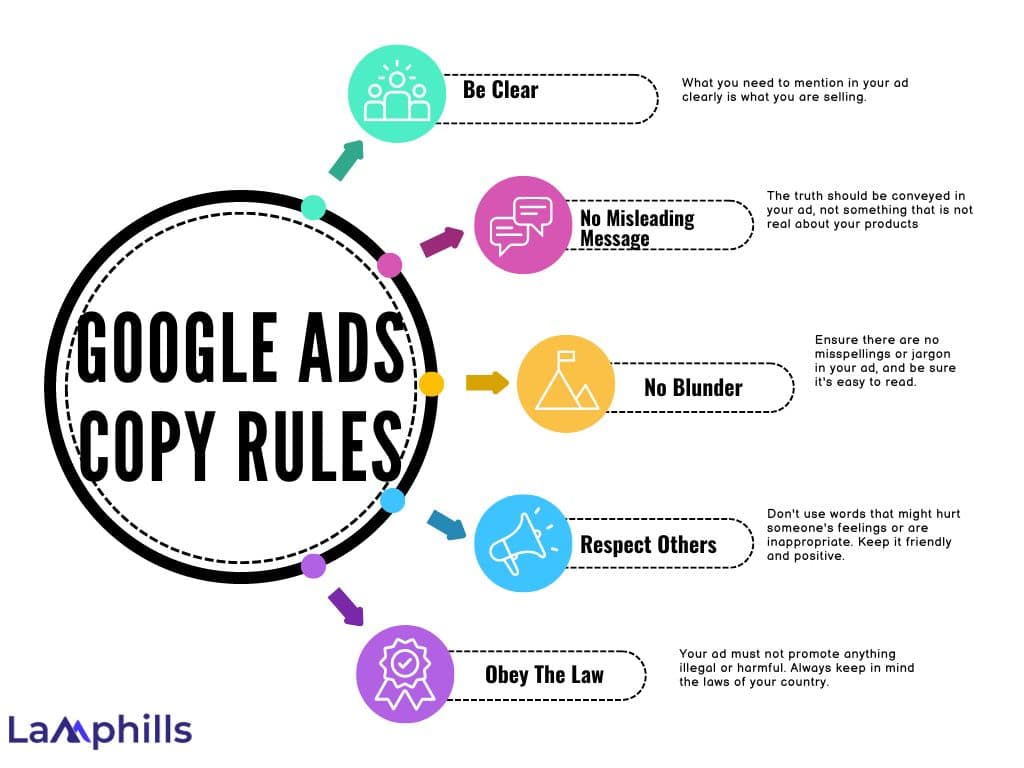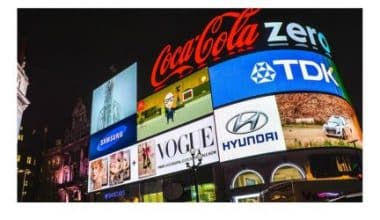One of my last summer’s tasks was redesigning Google Ads for a newly established online bookstore. The owner was experiencing low click-through rates, particularly high bounce rates. She expressed her lack of patience and her eagerness to see changes occur. Her concerns led me to spend significant time investigating, experimenting with, and fine-tuning the tactics. One evening, as I was working on multiple drafts of the ad copy, it dawned on me what to do. I revamped the campaign’s stunning copy the following morning and carried out the same procedure the next day. The bookshop saw a 50% rise in click-through rates within the week, and sales skyrocketed.
I discovered that a Google Ads copy can affect the fate of a business and its balance sheet. In this article, I will reveal how to write the best Google Ads copy together with the templates as well as examples that should help you.
Key Points
- Google Ads copy is crucial for the success of advertisements, as it can significantly impact click-through rates and sales.
- A typical Google ad consists of a headline, description, display URL, and call-to-action, all of which should be carefully crafted to attract and convert users.
- Tips for writing effective Google Ads copy include knowing your audience, using keywords wisely, highlighting benefits over features, incorporating a strong call-to-action, leveraging emotional triggers, and testing and optimizing.
- It is important to follow Google’s rules for ad copy. What are these rules? This includes being clear and honest, avoiding misleading information, ensuring correct grammar and spelling, respecting others, and obeying the law.
Google Ads Copy
Google Ads is a robust tool that allows companies and other types of organizations to find customers with the help of advertisements. When it comes to Google Ads, the success rate depends on the copy of the ad. The copy should be unique, timely, and persuasive enough to get clicked and translated to conversion.
Google Ads is a type of a PPC or pay per impression advertising platform in which the payers only pay when an ad has been clicked.
Google Ads is a PPC (pay-per-click) online advertising model in which, the advertiser pays for each click made on any of the links under the ad.
Google Ads works well if your goal is to attract good-fit customers, or, potential customers in your niche, because these people are looking for your products and services. As seen in Google Ads campaigns, customers make more visits to your website and request information as well as make visits to your stores.
A typical Google ad consists of:
- Headline: The first thing users focus on that captures their attention.
- Description: This explains additional features of the offer or the service.
- Display URL: Explains to the user where they will be taken if they click on the link at that time.
- Call-to-Action (CTA): Reminds users of the need to do more and they are encouraged to do so.
Google employs what it calls a Quality Score to measure the relevance and quality of the ads. To decrease costs and enhance the position of ads, it is necessary to catch high-quality and relevant ads with good landing pages. Thus, it is vital to write ads that are as close as possible to the meaning of the user’s query and the landing page content.
Google Ads Copy Tips: Writing the Copy
Know Your Audience
Knowledge of your audience is basic. It is important to research to understand their needs and requirements, their preferences as well as some of their pain areas. This information shall assist you when designing ads that will appeal to these people.
Use Keywords Wisely
Use keywords that relate to the products you are selling on your ad lines. Not only that, also makes your ad more relevant to the searched terms, which raises the probability of showing it to a user searching for those terms. However, don’t overuse the keywords because it will make the advertisement flow tough and off-putting to the audience.
Key takeaway: The most popular search engine is Google where people search for their demands and preferences. Millions of people use Google search engine daily. Besides, Google Ads has been in existence for almost two-decade-old, making it somewhat authoritative in the paid advertisements.
Highlight Benefits, Not Features
Instead of simply enumerating the features of your product or service, stress what it can do for your clients. Describe how to address an issue or improve the user’s activity. For instance, instead of writing “High-quality sneakers” you can write “Introducing premium sneakers and get the most comfortable shoe experience.
Incorporating a Strong CTA
A good call to action persuades the users to take a specific action. Utilize phrases such as Shop Now, Get Started, or Learn More. Using elaborate statements that are action-oriented in connection with the offer will be effective.
Examples of a strong CTA

If you look closely at the image above, you will see where I wrote CTA 1 and CTA 2. CTA (call to action) prompts the customer to take action immediately! Another example can be found in the image below.
Leverage Emotional Triggers
Engage the emotions of those you will be presenting your advertisements. Such words as ‘Exclusive’ ‘Limited Time Offer’ or ‘Hurry’ affect the user’s consciousness and make them click on the ad.
Test and Optimize
Focus on frequent A/B testing when it comes to the ad copy to identify which one performs better.
What changes can be made with headlines, descriptions, and CTAs?
Employ A/B testing, to establish staggering differences in the performance, and consequently, the ads.
Google Ads Copy Rules

Google has essential rules to observe when ad copy must ensure that your ads are fair, transparent, and helpful. Some of the mistakes I made when I started writing Google Ads copy were because I did not follow and stick to Google’s rules. As a result, it was flagged as inappropriate. Nonetheless, you can avoid these, if you stick to the rules listed below.
Rule 1: Be Clear and Honest.
What you need to mention in your ad clearly is what you are selling. If it’s lemonade, your ad needs to be talking about that and not cookies.
Rule 2: No Misleading Information
Do not lie to them. The truth should be conveyed in your ad, not something that is not real about your products—for example, giving superpowers when it can’t.
Rule 3: Grammar and Spelling must be Correct.
Ensure there are no misspellings or jargon in your ad, and be sure it’s easy to read.
Rule 4: Respect Other People
Don’t use words that might hurt someone’s feelings or are inappropriate. Keep it friendly and positive.
Rule 5: Obey the Law
Your ad must not promote anything illegal or harmful. Always keep in mind the laws of your country.
Quick Tips to Make Your Google Ads Awesome
- Use Exciting Words: Words like “Amazing,” “Free,” and “New” grab attention.
- Be Specific: Instead of “Buy toys,” say “Buy cool superhero toys.”
- Add Numbers: “50% off” or “Only $5” makes your offer more appealing.
- Ask a Question: “Want to taste the best lemonade?” can make people curious.
- Create Urgency: Use phrases like “Limited time” or “Hurry up” to encourage quick action.
Common Mistakes to Avoid
- Too Many Words: Keep it short and to the point.
- Overpromising: Don’t say something that’s not true, like “Our product cures all illnesses.”
- Not Including a CTA: Always tell people what to do next.
- Ignoring Rules: Make sure your ad follows all Google Ads rules to avoid getting banned.
Table Template for Simple Google Ads Copy Guidelines
| Ad Type | Headline | Description | URL | CTA |
| Basic Offer | Get [Product] Now | Best [Product] for [Benefit]. Click here! | www.example.com | Shop Now |
| Discount Deal | [Product] at [Discount]% Off | Save [Discount]% on [Product]. Hurry! | www.example.com | Save Now |
| Quick Fix | Fix [Problem] with [Product] | Tired of [Problem]? Try now! | www.example.com | Try Now |
| Event Reminder | Join [Event] Today | Don’t miss out! Sign up now. | www.example.com | Sign Up |
| Limited Offer | Only [Number] Left of [Product] | Only [Number] left! Buy now. | www.example.com | Buy Now |
Google Ads Copy Template
A Google Ads copy template includes the necessary peculiarities of the platform’s advertising and gives the advertiser more or less directions in terms of composing the advertising text. The template generally comprises a tester, a description, and a call to action button CTA: The headline should first and foremost be short and relevant to the content, as well as catchy and communicate the advantages of the offered goods or services. The deeper description should go beyond merely stating the benefits and characteristics of the product and elaborate on how your offering is better than what the client can already get. The CTA button should give a clear message that should persuade the user to click on the button and perform conversion.
Apart from the headline and description and the call to action button, the Google Ads copy template may contain extensions; which are additional lines to the ad copy. Some of these extensions can be more specific such as the physical address of your business, business phone number, or a brief description of your business. They can also be placed over any special offers or discounts that you are providing this would help increase the chances of a user clicking on your ad.
What Is Google Ads Copy?
Google Ads copy is the text or the words that are used in an advertisement when placed on Google. It contains the headline, description, display URL, and the call to action meant to grab the attention of possible clients to the ad. This copy is crucial because it is generally the first contact prospective buyers have had with your company. A transparent, well-written ad can open up the floodgates, increase traffic and sales, and create a better brand recall in the minds of the consumers.
How Do You Use Ad Copy?
Ads are employed in a way that the potential client is drawn into making a certain decision within the shortest time possible possibly by visiting a website, buying a certain product, or subscribing to the firm’s service. Here’s how to effectively use ad copy:
- Attract Attention: Choose a sensational headline that attracts the attention of the target audience or the readers.
- Deliver Value: In the description list the advantages and value that the consumer stands to gain from the product or service.
- Build Trust: Work on the principle of ‘word of mouth’ or authors of the content and trust the audience.
- Direct Action: Describe, with specificity, the steps the user should take next, and the action you want them to perform after reading your content, for instance, ‘Download now’ or ‘Get started today’.
- Match to Landing Pages: Make sure your ad targeting rises to the top — again, make sure your ad copy lines up with the content and products/ services you promote on your website or landing page.
How Do I Write Good Copy for Google Ads?
To write good copy for Google Ads, follow these essential steps:
- Understand Your Audience: Understand to whom it is being targeted so that the effort of creating the ad is not in vain. Adapt the language and content of the message according to the client’s requirements and preferences.
- Use Strong Headlines: It is usually recommended to initially gain the reader’s interest by using a short and catchy headline that speaks of the value the product or service being advertised promises to offer.
- Highlight Benefits, Not Just Features: Remember that the customer will not care about what your product will do; rather will think more about what will be gained.
- Create a Clear Call-to-Action (CTA): Use a Category Call to Action underlined and in a contrasting color to nudge people to take quick action and do something as simple as “Get Yours Today” or “Order Now”.
- Use Emotional Triggers: Such labels as “Exclusive,” “Limited Time,” and “Save” are going to elicit an emotional reaction and make the audience take action.
- Test and Optimize: To get the best out of the ad, you must make sure that you try different versions of the ad frequently. Use the performance data to work on increasing the performance, thus increasing the outcomes.
How Long Should a Google Ad Copy Be?
Since a Google Ads copy’s main goal is to grab users’ attention, its content shouldn’t be too complicated. The headline should contain no more than 30 characters and a description of approximately 80 characters for a single line or 90 for lines added to the text ads. This ensures that your ad does not distort the format used by Google and is also easy to read. The key is to communicate this information clearly while withholding as much as you can so as not to confuse the user.
Who Writes Ad Copy?
Ad copy can be written by anyone involved in creative advertising. This includes copywriters, marketing experts, or experts in advertising like the account executive.
They have excellent knowledge of consumers and some academic knowledge of marketing concepts. They create persuasive communications that reach the target stakeholders and make them take the intended action for the set organization’s goals and objectives. In small organizations, this task may be done by the business proprietors or managers who understand their products and market well. Thus, regardless of the writer, ad copy should be created with the help of thorough knowledge of both the product and people.
Last Words
Writing content for Google Ads is like writing a funny and imaginative poster. It should be obvious what you are saying, sincere, and elicit strong feelings of ardor and passion. Write in simple language, stay on topic, and remember what would make someone click on the advertisement. Consequently, you may create stunning Google Ads to grab attention and get great performance with these ideas!
Related Posts
- Proven SaaS Content Marketing Tactics for Boosting Engagement and Conversions
- WILL AI REPLACE WRITERS? What You Should Know
- 14 Best AI Tools for Marketing That Will Transform Your Campaigns
- 8 Best Examples of Cause Marketing Campaigns and Strategies for Developing One





